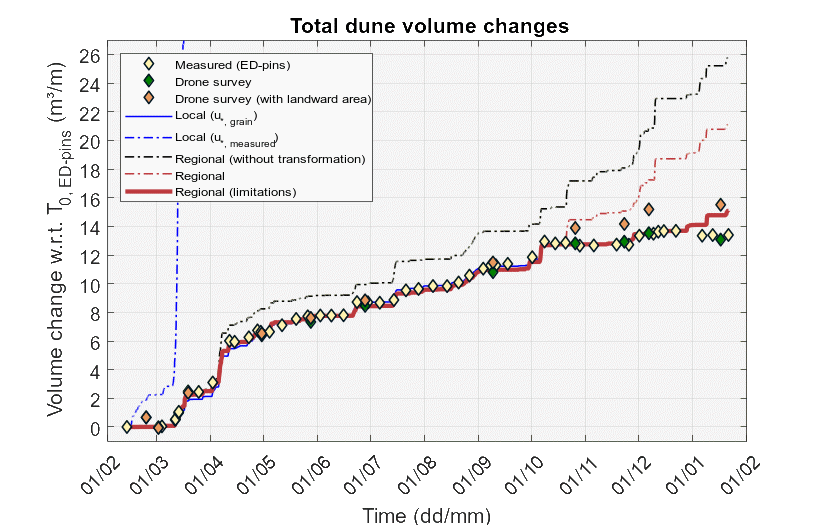G. Strypsteen1* and P. Rauwoens1
1Hydraulics and Geotechnics, Department of Civil Engineering, Bruges Campus, KU Leuven, Spoorwegstraat 12, 8200 Bruges, Belgium.
*corresponding author:
Introduction
An understanding of aeolian sediment transport processes and its interaction with vegetation is crucial for predicting the development of coastal dunes. Coastal managers are getting convinced of building with nature concepts, such as dunes in front of dikes, for coastal protection. For an optimal design of these artificial dunes, a fundamental knowledge of morphological changes is required. Despite many decades of research, we remain unable to accurately predict aeolian sediment transport as input for dune growth and the subsequent dune development. Commonly used aeolian sand transport models compute sand transport rate with bed shear velocity to power two or three, where shear velocity is calculated based on time-averaged wind velocity measurements. However, the bed shear velocity is generally estimated too large leading to overprediction of sediment transport rates. In this study, we investigate the predicting ability of a modified Bagnold transport model (Van Rijn & Strypsteen, 2020) including sub-models for bed roughness and shear velocity by exploring a multi-monthly dataset of wind characteristics and dune growth of an artificial dune.
Methods
We incorporate detailed measurements of wind variables (speed, direction) and vegetation into the modified Bagnold model and compare them to high-resolution topographic datasets (drone surveys and ED-pins). Wind transformation is applied to replicate wind conditions on the beach from a nearby regional meteorological station. All measurements are gathered during an ongoing field campaign that started in February 2021 at the 120x20m² dune-in-front-of-a-dike in Oosteroever, Belgium.
Results
Results provide field evidence demonstrating the prediction accuracy of aeolian sediment input to the dune (Figure 1). Local measurements of bed shear velocity leads to significant overprediction of dune growth. Sub-models for bed roughness and bed shear velocity lead to more realistic values and better predictions of dune growth. Transformation from regional to local beach conditions is essential to predict dune growth. Dune growth is influenced by supply limitations and vegetation trapping efficiency.

Figure 1: Multi-monthly dune growth in Oosteroever, Belgium and corresponding predictions.
References
van Rijn, L.C., Strypsteen, G. (2020). A fully predictive model for aeolian sand transport. Coastal Engineering, 156. https://doi.org/10.1016/j.coastaleng.2019.103600
I. Surname1*, F.N. Another-Surname2 , Y. Next-Surname2
1 University Name, Country; 2 Organization Name, Country
* Corresponding author: mail.name@organization.org


